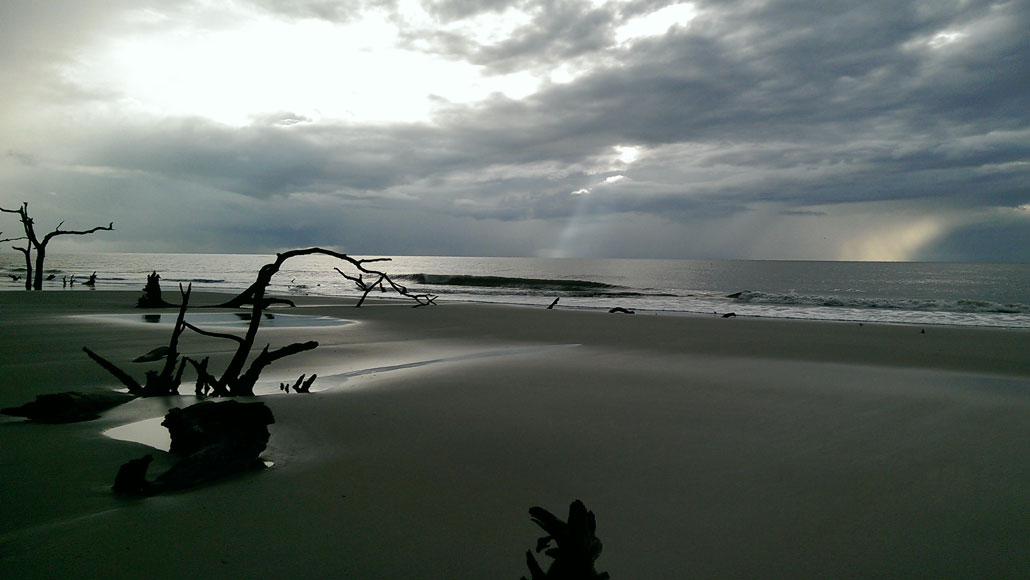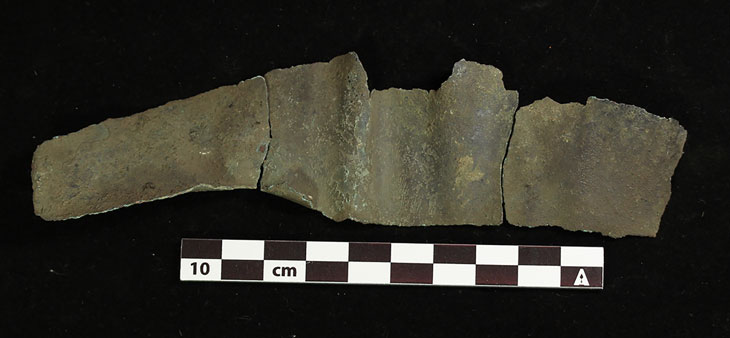An island grave site hints at far-flung ties among ancient Americans
Great Lakes and southeastern hunter-gatherers may have had direct contact 4,000 years ago

Excavations on St. Catherines Island (shown), off Georgia’s coast, point to direct exchanges between hunter-gatherers living there around 4,000 years ago and others from the Great Lakes, more than 1,500 kilometers away.
William D Bone/Wikimedia Commons (CC BY-SA 3.0)
Ancient North American hunter-gatherers had direct contacts with people living halfway across the continent, researchers say.
A ceremonial copper object and related burial practices at a roughly 4,000-year-old human grave site encircled by a massive ring of seashells in what’s now the southeastern United States closely correspond to those previously found at hunter-gatherer sites near the Great Lakes.
Because the object and practices appear together, emissaries, traders or perhaps even religious pilgrims must have traveled most or all of the more than 1,500 kilometers from the Upper Midwest to St. Catherines Island, off Georgia’s coast, the researchers conclude September 2 in American Antiquity.
Until now, “there was no clear evidence for direct, long-distance exchange among ancient hunter-gatherers in eastern North America,” says anthropologist Matthew Sanger of Binghamton University in New York. Finds at the McQueen shell ring on St. Catherines Island suggest that such exchanges involved objects and ideas that had spiritual significance, such as how to bury the dead.
Only a massive, enigmatic earthworks in northern Louisiana called Poverty Point, inhabited from around 3,700 to 3,200 years ago, has yielded copper and other artifacts apparently obtained directly from groups based hundreds of kilometers or more away. But the findings at the McQueen shell ring show for the first time that such exchanges weren’t limited to great gatherings but also occurred between smaller groups going about their daily lives, says Harvard University anthropological archaeologist S. Margaret Spivey-Faulkner, who was not involved in the study.
Close social ties between ancient hunter-gatherers across eastern North America “would have been a hard sell in [archaeology] even a decade ago,” she adds.
The McQueen shell ring consists of a massive circle of seashells, about 70 meters across, surrounding an earthen plaza. More than 50 circular or arcing shell rings, dating to between about 5,800 and 3,200 years ago, have been found at hunter-gatherer campsites along the Atlantic and Gulf coasts. Some shell rings measure more than 200 meters across and were piled more than 5 meters high; others are fewer than 50 meters across and relatively flat.
Researchers have traditionally thought that direct ties among populations spanning much of North America emerged only around 2,000 years ago among Native American farming communities. That would have been 12,000 years or more after people first reached North America, including what’s now Florida (SN: 5/13/16).
Ancient hunter-gatherers in eastern North America were thought to have traded stone tools and other items over long distances, starting roughly 5,000 years ago, via a string of exchanges between nearby groups that eventually spread the valued objects to distant locales. In those instances, hunter-gatherers who initiated the trades would have had no influence on how an object was used by its final recipients.
But that wasn’t the case for the objects at the McQueen shell ring, Sanger’s team found. Excavations in the center of the shell ring uncovered a burial pit filled with more than 80,000 ash-encrusted bone and tooth fragments, a copper band and remnants of stone tools. An analysis of the copper band’s chemical structure by Sanger and colleagues, published in the April Journal of Archaeological Science: Reports, indicates that the metal came from any of several ancient copper mines bordering Lake Superior and located on islands in that lake. Copper mining there dates to around 5,900 years ago. Radiocarbon dating of burned material in the McQueen shell ring burial places the copper band between 4,300 and 3,800 years old.

Crucially, the hunter-gatherers at McQueen also appear to have adopted ways of using the copper band into new customs for treating the dead. The shell ring grave contained the remains of at least seven people, all of whom were cremated. Burials of cremated individuals along with copper objects and other items characterized ancient hunter-gatherers in the Great Lakes area, and occasionally occurred in the Ohio River Valley and the Little Tennessee River Valley. Clear examples of ancient cremations in the coastal southeastern United States are rare.
The McQueen shell ring and a nearby shell ring on the island may have hosted gatherings of people in the late winter or early spring. Both circular structures contain remains of fish that were caught year-round, numerous clams and oysters harvested toward the end of winter and in early spring and nuts such as hickory and acorns that were harvested in the fall and could be stored for later use.
Hunter-gatherer groups based in the area may have gathered for seasonal ceremonies that included burial customs imported from the Upper Midwest, Sanger suspects.







